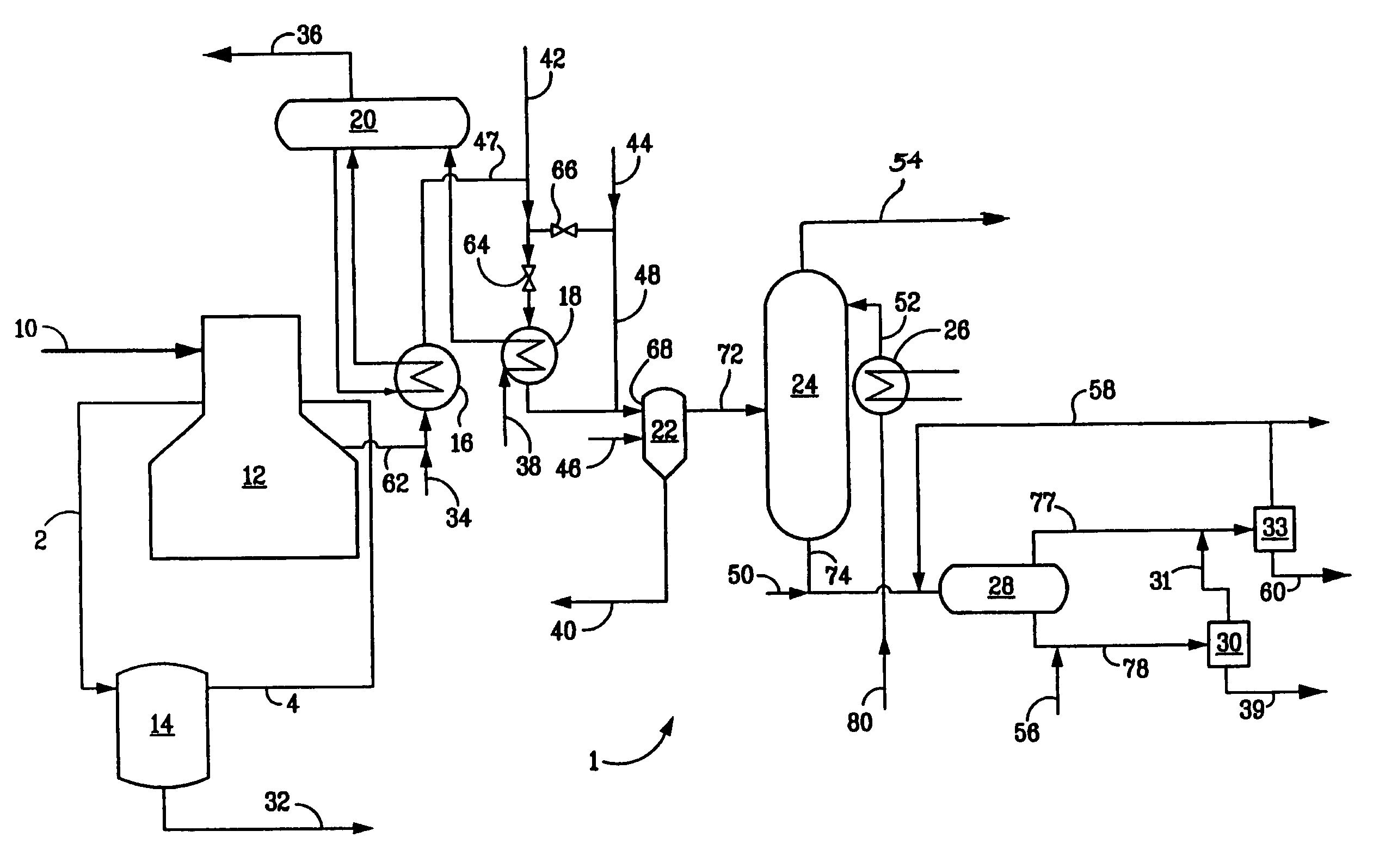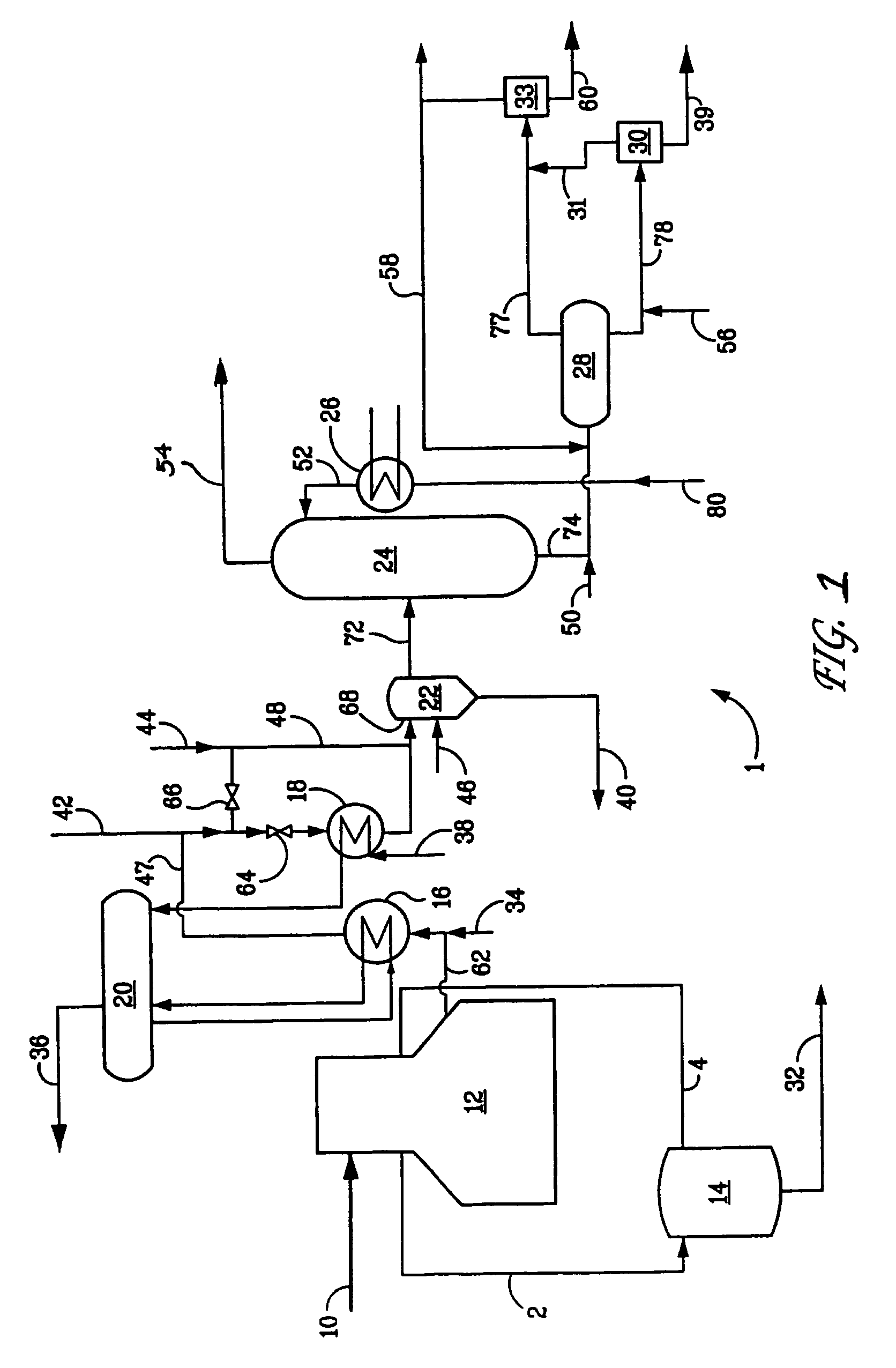Controlling tar by quenching cracked effluent from a liquid fed gas cracker
a gas cracker and effluent technology, applied in the cracking process of hydrocarbon oil, chemical refining of tar, light and heating equipment, etc., can solve the problems of low yield, limited tle fouling on the process side, and lack of flexibility to crack heavier feedstocks
- Summary
- Abstract
- Description
- Claims
- Application Information
AI Technical Summary
Benefits of technology
Problems solved by technology
Method used
Image
Examples
Embodiment Construction
[0028]Various aspects will now be described with reference to specific embodiments selected for purposes of illustration. It will be appreciated that the spirit and scope of the process and system disclosed herein is not limited to the selected embodiments. Moreover, it is to be noted that the figure provided herein is not drawn to any particular proportion or scale, and that many variations can be made to the illustrated embodiments. Reference is now made to the figure, wherein like numerals are used to designate like parts throughout.
[0029]Disclosed herein is a process for extending the range of gas cracker system feedstocks to include liquid feedstocks, including feeds that yield tar, even for example, up to 15 wt % tar, after cracking. The process may extend gas cracker flexibility to crack virgin crudes, condensates and / or the distilled liquid products from those feeds, such as naphtha, kerosene, field natural gasoline, etc.
[0030]Liquid feedstocks that may be employed herein ma...
PUM
| Property | Measurement | Unit |
|---|---|---|
| boiling points | aaaaa | aaaaa |
| temperature | aaaaa | aaaaa |
| boiling point | aaaaa | aaaaa |
Abstract
Description
Claims
Application Information
 Login to View More
Login to View More - R&D
- Intellectual Property
- Life Sciences
- Materials
- Tech Scout
- Unparalleled Data Quality
- Higher Quality Content
- 60% Fewer Hallucinations
Browse by: Latest US Patents, China's latest patents, Technical Efficacy Thesaurus, Application Domain, Technology Topic, Popular Technical Reports.
© 2025 PatSnap. All rights reserved.Legal|Privacy policy|Modern Slavery Act Transparency Statement|Sitemap|About US| Contact US: help@patsnap.com


